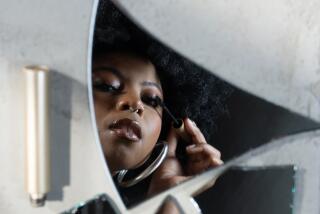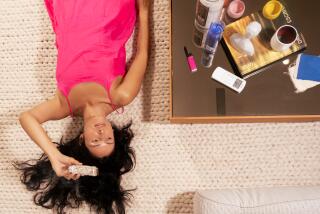Tracing the Foundation of Women’s Cosmetics in the U.S.
“Tellingly,” notes Kathy Peiss in her historical study of cosmetics in America, “Hope in a Jar,” “the first public action of the women’s liberation movement was a demonstration in 1968 against the Miss America beauty pageant. Protesting women’s enslavement to commercial beauty standards, 100 feminists filled a trash can with makeup, bras . . . and other beauty aids, and crowned a live sheep America’s beauty queen.”
But, although the feminists of the period wanted women to stop perceiving themselves in terms of their ability to attract men, this almost Puritanical outlook was soon superseded by a more permissive ethic of “anything goes.” Many women who wore makeup claimed they weren’t doing so to please men but to please themselves. Nor were they trying to attain some externally imposed standard: They were using cosmetics as a means of expressing their inner selves, they said.
Peiss’ research into the beauty culture has led her to come down on the side of those who claim putting on makeup is an act of self-expression. But her argument is flawed because she frames it as an either-or choice between two equally inadequate hypotheses: Either women have been tricked into using makeup by a sexist culture, or women have always enjoyed beautifying themselves, even in eras when the surrounding culture disapproved of “painted hussies.”
Not surprisingly, Peiss points to instances supporting the latter hypothesis. The question she ignores, however, is: Why is it that men who want to express themselves get along without eyeliner, finding adequate means of self-expression in art, music and literature?
Fortunately, “Hope in a Jar” is more informative than it is tendentious. A professor of history, Peiss offers a colorful historical survey of her subject. One doesn’t need to agree with her conclusions to be intrigued by the story she tells. Looking first at the 19th century, Peiss notes the sharp distinction that was drawn between “cosmetics” (wholesome, often homemade beauty aids) and “paints” (commercially produced products that “masked” the skin).
Cosmetics were permissible; paints were the sign of a hussy. Alas, the hussy was often harming herself more than the hapless men deceived by her “painted mask” because many of these products were lead-based. Peiss cites 19th century cases of women who literally died of the makeup they wore.
The late 19th and early 20th centuries saw the growth of the beauty culture as a cottage industry. Enterprising women from a variety of backgrounds--immigrants like Elizabeth Arden, African Americans like Annie Turnbo Malone--found unprecedented opportunity in a field that had not yet been taken over by men. Inventing hair- and skin-care products, such women built up their businesses marketing their products woman to woman. By the mid-1920s, however, the industry was controlled by male-dominated companies. For the ‘20s flapper, freedom meant being free to look like a “bad girl.”
Peiss examines everything from marketing techniques to the changing styles that influenced women’s ideas about how much and what kind of makeup to use. Perhaps the most poignant defense of beauty culture that her book offers is that for many a hard-working woman trying to cope with the demands of family, job, or both, devoting a few moments to her appearance could help to restore her self-esteem.
So, perhaps there’s nothing wrong with wanting to look good. But why are women so much more preoccupied with “beautifying” themselves?
Is it because a man’s appearance is less important, whereas a woman, no matter how wealthy or talented, still needs to be reasonably good-looking not to be seen as a joke? How many men would wish to be seen squiring around town a female Aristotle Onassis, Isaac Bashevis Singer or Pablo Picasso, three less-than-gorgeous men whom many women found wildly attractive? “Hope in a Jar” is a fascinating chronicle of what American women have done in the quest to improve their looks, but it doesn’t tackle why women feel the need to do so in the first place.
More to Read
The biggest entertainment stories
Get our big stories about Hollywood, film, television, music, arts, culture and more right in your inbox as soon as they publish.
You may occasionally receive promotional content from the Los Angeles Times.










